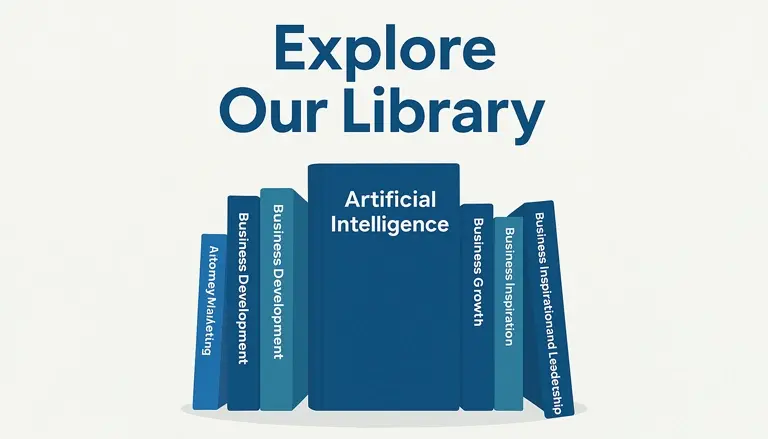

The Silent Killer of Profits: How Inefficiencies Drain Your Business and How to Stop It
Posted March 27, 2025 by Kevin Chern
“The secret of change is to focus all of your energy not on fighting the old, but on building the new.” — Socrates
Running a business is like piloting a high-speed jet—every inefficiency, no matter how small, can cause turbulence. And that turbulence? It’s expensive. Operational inefficiencies can cost companies up to 30% of their annual revenue (Forbes, 2023).
Yet, most businesses operate with hidden inefficiencies baked into their daily workflows. Research from McKinsey (2022) found that over 50% of businesses struggle with process inefficiencies that drain productivity and profitability.
But here’s the good news: optimizing business efficiency isn’t about drastic overhauls—it’s about smart, incremental improvements. Let’s dive into five critical strategies that can eliminate bottlenecks, cut unnecessary costs, and set your company on the path to sustainable growth.
1. Diagnosing Bottlenecks with Data & Expertise
Imagine trying to fix a car without knowing what’s wrong with it. That’s exactly what happens when businesses attempt to improve efficiency without first identifying the root cause of their slowdowns.
A study published in Harvard Business Review revealed that companies leveraging data-driven decision-making are 5% more productive and 6% more profitable than their competitors. (Harvard Business Review, 2023).
To diagnose inefficiencies, businesses should:
- Map out workflows – Identify redundancies and slow-moving processes.
- Analyze performance metrics – Track key KPIs to pinpoint bottlenecks.
- Utilize real-time data – Use business intelligence tools to make informed decisions.
For example, a logistics firm that struggled with delivery delays found that outdated inventory tracking was the issue. After adopting a real-time inventory management system, on-time deliveries increased by 27% in six months (Gartner, 2023).
Key takeaway: Businesses that leverage data-driven insights can eliminate inefficiencies before they turn into costly problems.
2. Optimizing Financial Operations to Strengthen Cash Flow
Cash flow problems are like quicksand—once a business gets stuck, escaping is tough. 60% of small businesses face cash flow struggles each year (U.S. Bank, 2023).
Efficient financial management is about more than just cutting costs—it’s about strategically reallocating resources to drive growth.
Three Ways to Optimize Financial Operations
- Cost Reduction Without Sacrificing Quality – Audit expenses and eliminate waste without impacting product or service quality.
- Smart Vendor Negotiations – Businesses that renegotiate supplier contracts save an average of 12% on procurement costs (Deloitte, 2023).
- Cash Flow Optimization – Ensuring a steady cash influx prevents disruptions in scaling operations.
- Case in point: A tech startup struggling with delayed customer payments implemented an automated invoicing system. The result? A 35% faster payment cycle and improved cash flow stability (PwC, 2023).
Key takeaway: Cash flow mismanagement is the #1 reason businesses fail. Prioritizing financial efficiency ensures long-term stability.
3. Leveraging Automation & Strategic Partnerships
In 2023, McKinsey found that only 31% of businesses have fully automated at least one major function. Meanwhile, companies that do see efficiency gains of up to 50% (McKinsey, 2023).
Where Automation Makes the Biggest Impact
- HR & Payroll – Automating payroll processing reduces errors by 75% and cuts costs by 30% (SHRM, 2023).
- Marketing & Customer Engagement – AI-driven email campaigns boost open rates by 41% (HubSpot, 2023).
- Inventory & Supply Chain – Businesses using AI for inventory forecasting experience a 15% decrease in stockouts (Gartner, 2023).
The Role of Strategic Partnerships
Rather than stretching internal teams thin, many businesses turn to outsourced experts for specialized tasks. Strategic outsourcing can:
- Cut operational costs by 25%–30% (Deloitte, 2023).
- Improve productivity by allowing employees to focus on high-value work.
- Enhance efficiency without the overhead costs of full-time hires.
Key takeaway: Automation and outsourcing free up time, reduce costs, and drive efficiency—without sacrificing quality.
4. Enhancing Team Efficiency & Communication
Even the most talented employees struggle in an environment plagued by miscommunication. Poor communication costs businesses an average of $12,506 per employee per year (SHRM, 2022).
How to Strengthen Team Efficiency
- Redefine Hiring & Training – Companies investing in continuous learning programs see a 218% higher income per employee (LinkedIn, 2023).
- Improve Collaboration Tools – Businesses using advanced project management tools increase efficiency by 22% (Wrike, 2023).
- Create Transparent Performance Metrics – Employees perform better when they have clear expectations.
Example: A fast-growing SaaS company struggled with remote team alignment. By implementing Slack for internal messaging and Notion for project management, they reduced miscommunication-related errors by 38% in six months (TechCrunch, 2023).
Key takeaway: Clear, structured communication directly impacts efficiency and profitability.
5. Committing to Continuous Improvement & Market Adaptability
Efficiency isn’t a one-time fix—it’s an ongoing commitment. Research shows that companies with strong continuous improvement initiatives experience 19% higher revenue growth (Deloitte, 2023).
Building a Culture of Continuous Improvement
- Analyze Market Trends – Adapting to shifts in consumer behavior and industry regulations.
- Customer Feedback Integration – 77% of businesses that actively incorporate customer feedback outperform competitors (Forrester, 2023).
- Regular Performance Reviews – Businesses that conduct quarterly efficiency audits see a 12% reduction in operational waste (PwC, 2023).
Key takeaway: The best businesses stay ahead by evolving with market needs, not reacting to them.
Final Thoughts: The Road to Sustainable Growth
Maximizing business efficiency isn’t about working harder—it’s about working smarter. From data-driven decision-making to financial optimization, automation, streamlined communication, and continuous improvement, every strategy contributes to a more resilient, profitable business.
That’s where Sanguine Strategic Advisors comes in. Our team specializes in helping businesses identify inefficiencies, optimize workflows, and implement high-impact growth strategies.Let’s build a leaner, more efficient future for your business. Visit sanguinesa.com today.
Tags:




